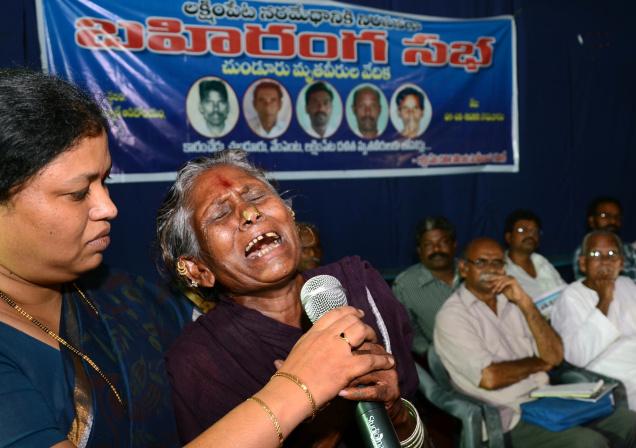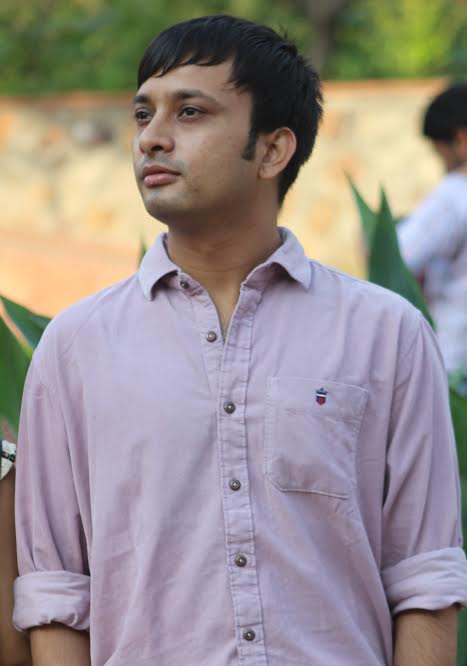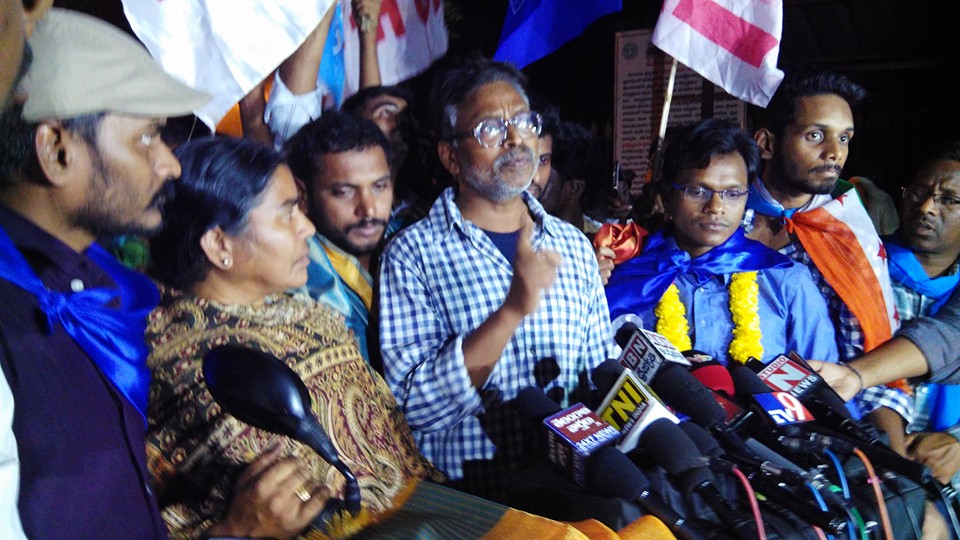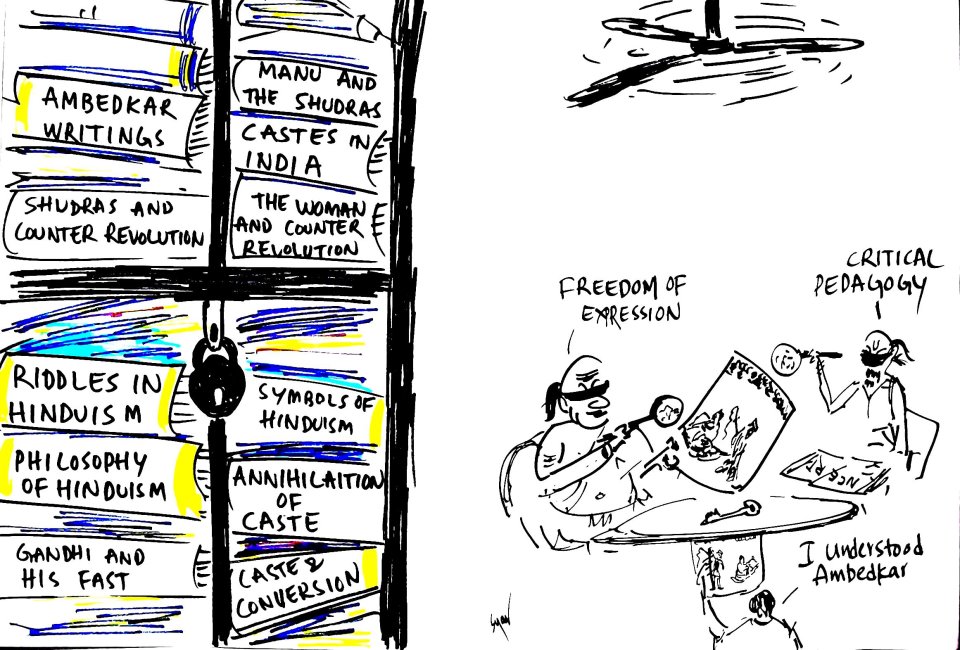Ravi Chandran
All the atrocities committed on Dalits are a result of Dalit assertion. This was also exposed on the intellectual level recently, when some Dalits theorized on the Ambedkar cartoon and the non-Dalit intellectuals joined hands for an all out war against them; in this too they found a few amenable Dalit intellectuals to pamper. The ‘pampered’ Dalits are a serious problem for the Dalit movement at the grassroots level. Take the case of Khairlanji, where the Inspector, Doctor were all Dalits but still the doctor’s report and the FIR, which was not registered according to the law, were manipulated. The present case of violence in Lakshmipeta throws a serious challenge to the Dalit movement in contemporary politics. Mr. Sudarshan, the Sub-Inspector of the area, is a Dalit (Mala); the Circle Inspector Mr. Shashibhushan is a Dalit; Additional DSP Sagar is Mala; DSP Mr. Bala Mani belongs to a Scheduled Tribe; on top of all, Mr. Kondru Murali, Dalit (Mala) MLA of the constituency, is also the Health Minister in the present Congress government. Though all these people were there, still Dalits in that region were murdered brutally. This article focuses on the background of the attack and the politics of a few Dalit organizations whose stand seems to be aligned with the state government.

A brief history
The government took the land of the Lakshmipeta villagers, several decades ago, to construct a reservoir and settled them not very far from their earlier village. During this process, the government gave compensation to the villagers depending on the land each family held. The village comprises of Dalits and Toorpu Kapus and other Kapus. The Toorpu Kapus owned 180 acres of land. And the other Kapus had 80 acres of land. Malas in the village did not have any land apart from the land on which their houses were built. The government’s compensation differed according to the land each family owned. The government gave around Rs.10,000/ and a government job to those who owned land. If there were no any qualified persons in a family (to apply for the jobs offered) then the government increased the compensation. The non-Toorpu Kapus who owned 80 acres of land were educated, so most of those families got government jobs and moved to the neighboring town (2-3 hrs journey).
The remaining population lived beside each other. However, Dalits resisted the move to shift their homes; one of the main reasons was due to the inadequate compensation the government had given them. Each family was given around Rs. 4-5,000/. However the MRO (Mandal Revenue Officer) of the time requested the Dalits to leave the land assuring them that the land won’t be submerged and it can be used for cultivation later. In due course, the Dalits agreed to leave the land and were resettled by the government (the government did not construct the houses). After they shifted their houses, the Toorpu Kapus continued to cultivate the land. After the other Kapus left the remaining land and it was lying fallow for a few years, the Dalits started to cultivate it. The Toorpu Kapus asked the Dalits to pay rent for cultivating the land, because the original landowners were also Kapus. Dalits in the village refused saying they did not have to pay rent to the Kapus in the village because the ‘original’ land owners had left the land.
This disagreement sowed the seed of hatred against the Malas in the village. Two years passed, there were discussions with the MRO where they said the Dalits can cultivate the land. After two years, the Panchayat post was reserved for Dalit women. A Dalit woman of that village was chosen unanimously to the post. The Kapus told the woman, after the elections, that she need not come to the Panchayat office, because the vice-president will take care of everything. The vice president was also from the Kapu community. The Dalit woman resisted and told them that she would continue to do the job that was assigned to her. The Kapus did not like this. Also they use to ask her to sign blank cheques as the Panchayat President and when she questioned this and also asked for the accounts of expenditure, it was also not liked by the Kapus.
Assertion and its backlash
During the five years of her term, not a single contract was give to the non-Kapus; all were taken by the Kapus. However, the president sanctioned funds for the development of the Dalit area and built roads, footpaths and drainage systems. Though the Kapus opposed this, they did not create too many problems because the contracts were automatically awarded to them. There were instances when the Kapus shouted at the President saying that as a Mala she could not call a meeting of the panchayat. According to the rules, only the president is empowered to call monthly meetings. This hatred grew day by day. In one such instance, some Kapu women standing in a shop remarked that the Malas have to be taught a lesson and thrown out of the village. A Mala woman who was passing by overheard this and questioned the Kapu women about the comment. The Kapu women beat her up so badly that she was admitted in a hospital. Incidents like this one resulted in three cases being filed in the local police station. But the police took no action; instead the so-called Dalit police officer used to shout at the victims for creating problems. When the Mala woman was beaten and was admitted in hospital where she died later, the police arrested a few people who got bail in three days. Those three who got out on bail started saying openly that nothing could happen to them because everyone worked for them, and therefore no one can stop them. The Sub Inspector of the area always used to tell the Dalits that he was also a Mala, therefore listen to the Kapus and leave the land alone. He openly threatened those Dalits who filed the cases; he also brought about a ‘compromise’ in one such case by getting one of the complainant’s signatures on a blank sheet, which was later used for obtaining similar compromises in other cases.
Taking note of these cases and other problems, a police picket was established in the village, where one constable had to stay day and night. This was due to the pressure from the villagers and the media. Hence, the minister Kondru Murali was also monitoring the picketing. The police station is one kilometer away. The Kapus were openly saying that one day they would throw all the Dalits out of the village.
Whenever Dalits had problems they approached the powerful landlord of the area, Botsa Vasudeva Naidu. He always abused the Dalits saying only they would listen (to reason) only if someone dies. This threat was used several times; Kondru Murali, though he was a cabinet minister and also a Dalit (Mala) MLA who had acquired power through those Dalits’ votes, never intervened. However, Dalits in the village never took those threats seriously because they still believed that would not happen. It is sad to see that M.L.A Kondru Murali is still portrayed as a savior of Dalits by a few organizations, such as the Mala Mahanadu.
One other incident that needs to be recounted (to illustrate the tension prevalent in the village) was when a few Dalit kids were playing cricket and when the ball fell in the Kapu neighbourhood, they were beaten up by the Kapus.
This was the background of the attack.
Land issue or Caste clash
Lakshmipeta will now be added to the existing list of sites of caste violence. Though there is very little in the English media on this issue, still whatever is written on Round Table India and translated by Kuffir gives the ground picture of the entire massacre. I, as a student and an observer, would like to put a few thoughts on record. Till now the mainstream discourse has been saying that the attack on Dalits was due to the land issue. If that is the case, then is this the only village in the region where Malas have land? Vangara, Sivarampuri, Oni, Moguru, Sangam are a few other villages in the immediate neighbourhood of Lakshimpeta. In all these villages, Mala constitute a large percentage of the SC population. However, there are few Madigas and some Relli population too. In these villages, I am told by the villagers, there are quite a good number of Malas and Madigas who own small pieces of land, a few cents on an average.
Therefore we cannot conclude that it is completely a land issue. A few organizations say that it was a caste clash due to the assertion of the Lashmipeta Dalits. The assertion has a historical background. Dalit assertion grew after Chunduru, Karamchedu and other massacres, but the difference here is that the Dalits not only asserted themselves but also claimed their legal rights? That is what is interesting to study. Dalits claiming land is not unusual but saying that they would not pay rent for the land to the Kapus, is. This seems unique to me.
We should also remember that these villagers are mostly uneducated but they did not compromise in their assertion. Not a single family in the village can be pointed out as bending to the government.
Mode of Killings: refer to this Round Table India article or this video on Dalit Camera.
What is happening on the ground?
Demands of the public in Lakshmipeta:
- They demand justice for the killings, the arrest of culprits such as Botsa Vasudeva Naidu, and others. These demands have been mostly met. However we cannot say whether those arrested will remain behind the bars. Getting justice can be a long process.
- The villagers are also asking for compensation for all the victims; many may not be able to lead the kind of normal lives as they had led earlier.
- The villagers are also demanding government jobs for those families whose members had been killed. Many are asking for a memorial for those who died.
5 people were killed for land, therefore we need the same land. If we don’t claim that land then we might not do justice for those who gave up their lives.
The Government’s stand on the issue
The Government is saying that the Dalits will be provided 1200 acres land in a different place, with schools, community hall, play ground etc; the collector adding that everyone can play football in that ground. This proposal is not acceptable to the villagers; they are asking for the same land. On this issue, there are a few Dalit organizations which support the Government’s stand, these organizations also have the support of the Dalit bureaucrats’ associations. The SC/ST employees’ union also supports the government proposal.
Differences in the Dalit Movement
After this attack, Dalits in AP decided to organize meetings jointly; however, before the date of the meeting, Dalit Mahasabha announced their press conference. Hence, Dalit Mahasabha did not participate in the joint meeting. In the joint effort,there are around 50 organizations, the prominent ones being Kula Nirmulana Porata Samithi, Republican Party of India, Telangana Praja Front, APCLC etc.
Most of these organizations agree with those demands (of the Dalits of Lakshmipeta, as listed earler), however they differ on various other demands. Those are as follows:
Dalit Mahasabha (DM) is the one and only organization which receives coverage in the English media. Their stand, which includes the demand for the arrest of Mr. Botsa Satyanarayana, APCC President, is:
Botsa Satyanarayana wields the power of the de facto Chief Minister in the three districts of this region (North East Andhra). The police stations, MRO offices, MDO offices – all function under his control. His family dominates the politics in the region. His control and use of the local liquor mafia, goonda elements to neutralize opposition and exercise wanton misuse of power, sustains his domination.
Though Dalit Mahasabha announced a ‘Chalo Srikakulam’ programme on 2nd July, it was dropped later. It held a ‘Chalo Hyderabad’ protest meeting, and now they are organizing a ‘Chalo Delhi’ programme.
The above organizations’ stand on Kondru Murali is not clear, and also on the land question is not clear: whether DM wants the same land as the villagers, or does it stand with the government for a new piece of land.
[Watch Videos (in Telugu) on Dalit Mahasabha’s stand & on Kondru Murali’s role.]
Till now KNPS and other organizations have held public meetings and protests in places like Lakshmipeta, Hyderabad, Visakhapatnam and also at Vijayawada on 6th August and are planning a meeting in Warangal, and a ‘Chalo Delhi’ programme on September 6th.
Surprisingly, not a single person (in a position of authority) is coming forward to help the movement; even a hall, Ambedkar Bhavan in Visakhapatnam, was denied to these organizers. However they gave in in the final stage. The organizers don’t receive any kind of support from the SC/ST Employees’ organizations, or even from the Bureaucrats; neither the current nor the retired employees are with this movement. Businessmen from Dalit communities are also not with these organizations.
We should not forget that government employees don’t want to go against the government. Also, Dalit entrepreneurs in AP are lobbying with the government for the introduction of some kind of a land allotment scheme. Hence their stand is too problematic and could subvert the movement which is fighting against the government. All these strands of the movement don’t want to support KNPS, and others.
Self-critique is much needed
We should remember that the upper castes were not the only ones responsible for the killing of Dalits, as it happened in Karamchedu and Chunduru. Also during the earlier massacres all the Dalit organizations stood firmly and fought against the State Government. In the killings happenings now, whether in Khairlanji or in Lakshmipeta, the upper castes have learnt to use Dalits to kill their own people. Therefore it’s important to see the dangers of this new approach by the upper castes to use a few selfish Dalits in the killing of their own people. And there are a few Dalit organizations and sections of the new Dalit middle class who want to save such people. While critiquing the upper castes, it is also important to critique the selfish sections in the Dalit movement and the role of Dalit bureaucrats or else, many more Laksmipetas will continue to happen.
~~~
Ravi Chandran (EFLU, Hyderabad) blogs here.
Picture courtesy: The Hindu










